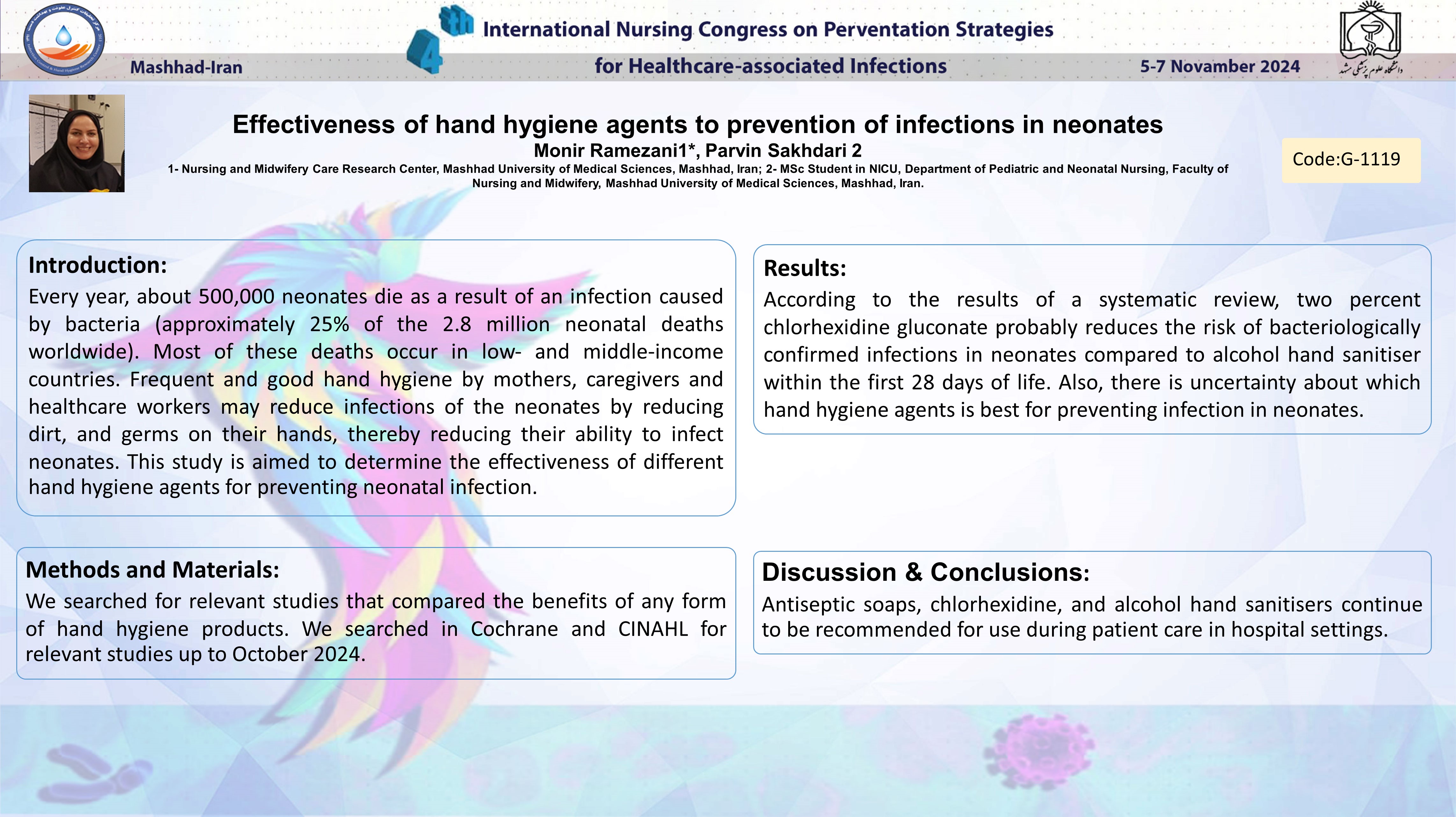Effectiveness of hand hygiene agents to prevention of infections in neonates
کد: G-1119
نویسندگان: Monir Ramezani © ℗, Parvin Sakhdari
زمان بندی: زمان بندی نشده!
دانلود: دانلود پوستر
خلاصه مقاله:
خلاصه مقاله
Introduction: Every year, about 500,000 neonates die as a result of an infection caused by bacteria (approximately 25% of the 2.8 million neonatal deaths worldwide). Most of these deaths occur in low‐ and middle‐income countries. Frequent and good hand hygiene by mothers, caregivers and healthcare workers may reduce infections of the neonates by reducing dirt, and germs on their hands, thereby reducing their ability to infect neonates. Objective: To determine the effectiveness of different hand hygiene agents for preventing neonatal infection. Methods: We searched for relevant studies that compared the benefits of any form of hand hygiene agents. We searched in Cochrane and CINAHL for relevant studies up to October 2024. Findings: According to the results of a systematic review, two percent chlorhexidine gluconate probably reduces the risk of bacteriologically confirmed infections in neonates compared to alcohol hand sanitiser within the first 28 days of life. Also, there is uncertainty about which hand hygiene agents is best for preventing infection in neonates. Conclusion: Antiseptic soaps, chlorhexidine, and alcohol hand sanitisers continue to be recommended for use during patient care in hospital settings.
کلمات کلیدی
Hand hygiene, Prevention, Infections, Neonate
